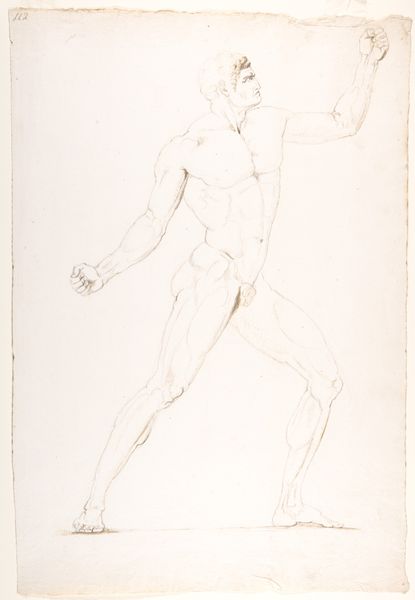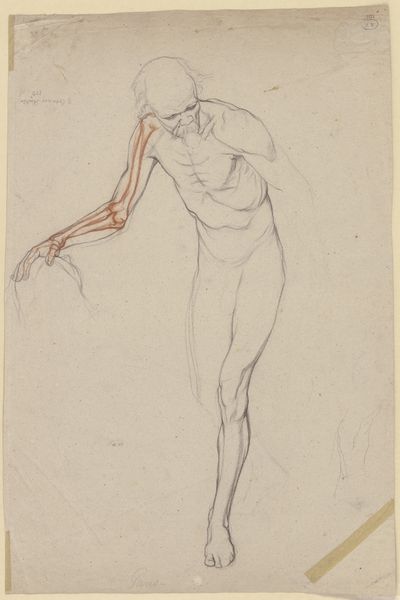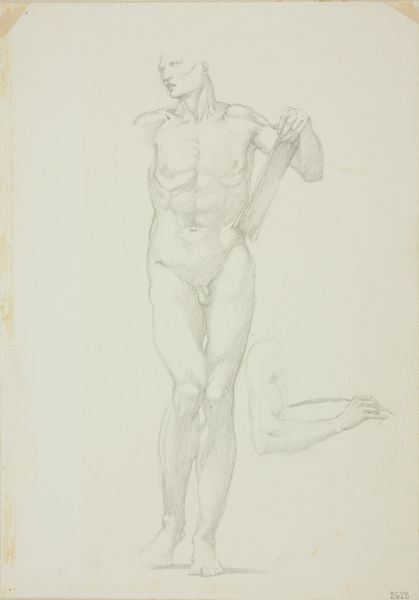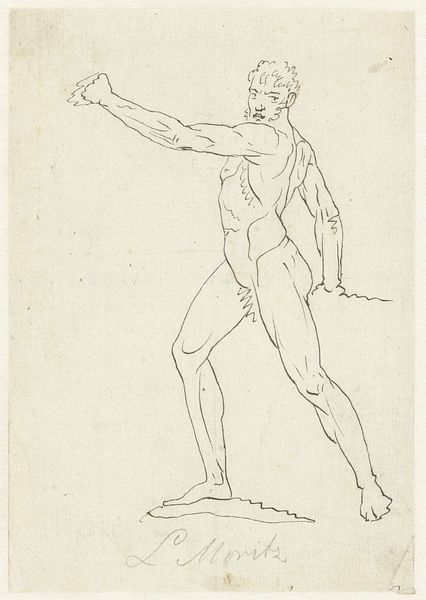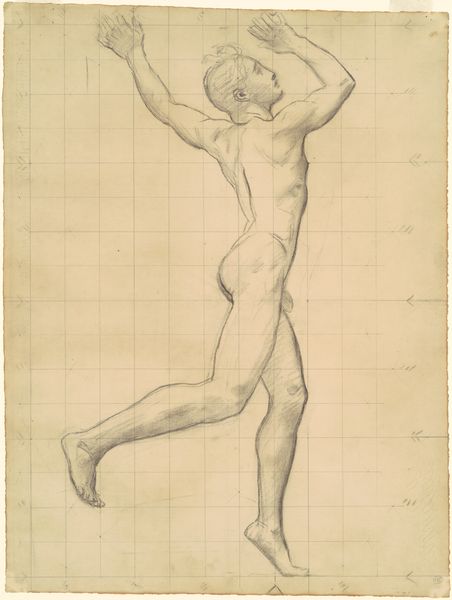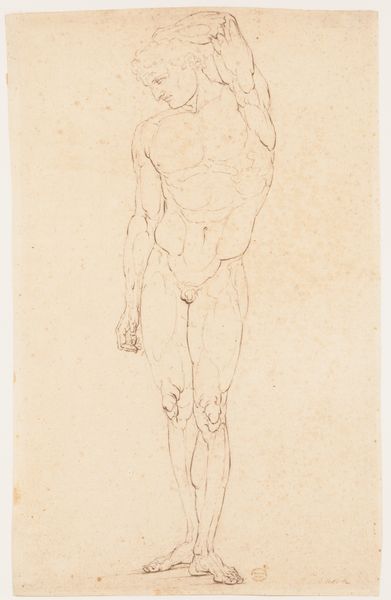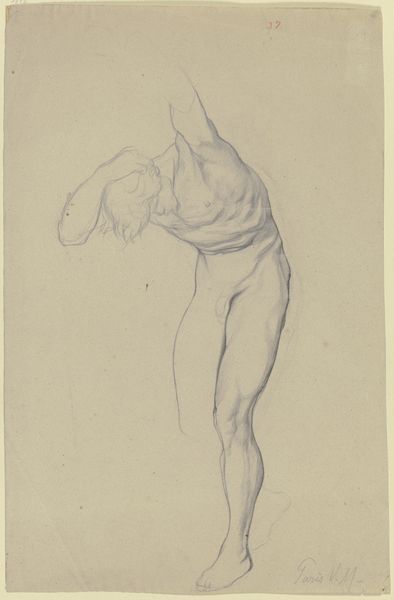
Tekenvoorbeeld van een staand écorché met gestrekte arm 1820 - 1833
0:00
0:00
jeanaugustindaiwaille
Rijksmuseum
drawing, pencil
#
portrait
#
drawing
#
neoclacissism
#
pencil sketch
#
figuration
#
romanticism
#
pencil
#
history-painting
#
academic-art
#
nude
#
realism
Dimensions: height 545 mm, width 425 mm
Copyright: Rijks Museum: Open Domain
Jean Augustin Daiwaille made this anatomical drawing of a flayed man, an écorché, rendered in delicate lines. Here, the raised arm is no mere anatomical detail; it echoes the classical motif of the victor, a gesture of triumph that dates back to antiquity. Consider the Winged Victory of Samothrace, her arm once raised in a similar salute. This gesture, laden with connotations of triumph, transcends its original context, appearing across various epochs and cultures. In Daiwaille’s écorché, however, the gesture is profoundly unsettling. The raised arm, typically a symbol of vitality, is presented on a figure stripped bare, devoid of skin. This juxtaposition evokes a powerful sense of unease, hinting at the transience of triumph and the ever-present specter of mortality. It is a poignant reminder that beneath the surface of victory lies the stark reality of human fragility. This drawing is not merely an anatomical study, but a meditation on the human condition, a silent memento mori that resonates deeply within our collective consciousness.
Comments
No comments
Be the first to comment and join the conversation on the ultimate creative platform.

